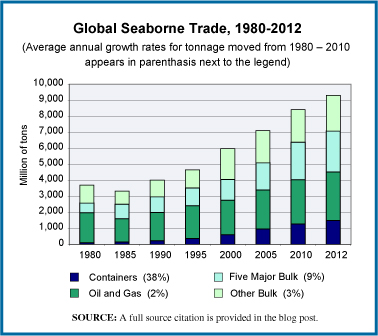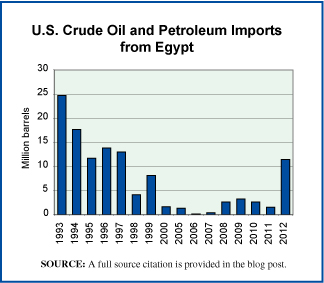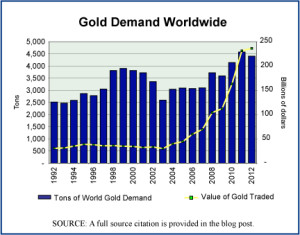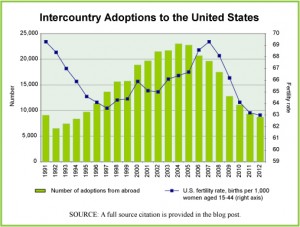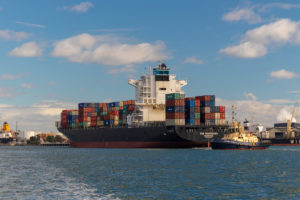
Year: 2019 and 2027
Market size: $0.38 billion and $5.14 billion, respectively
Today’s market size shows the total global revenues from LNG (liquefied natural gas) bunkering in 2019 and projected for 2027. LNG bunkering is the process of fueling a ship with liquefied natural gas. On January 1, 2020, new International Maritime Organization regulations concerning sulfur dioxide emissions went into effect. The new rule limits sulfur in fuel oil used in marine vessels (bunker fuel) to 0.50% mass by mass (m/m), much lower than the previous 3.5% limit.1 Sulfur dioxides are linked to asthma, and pulmonary, cardiovascular, and respiratory diseases. Sulfur dioxides also cause acid rain. Traditional bunker fuel contains 27,000 parts per million (ppm) of sulfur compared to 10-15 ppm in vehicle fuel. Heavy fuel oil accounts for 14% of sulfur emissions. The use of liquefied natural gas, on the other hand, reduces sulfur dioxide emissions by 100%. In addition, carbon dioxide emissions are reduced by 25% and nitrogen oxide emissions are reduced by 90%. In 2020, fewer than 400 out of more than 80,000 registered ships globally ran on liquefied natural gas.2 This number is expected to grow to 1,000 by 2030. About 13% of the new build order book is for LNG-fuelled ships.
Ship-to-ship bunkering held 60.5% of the market in 2019 and is expected to maintain the highest share through 2027 due to the increasing number of LNG-fuelled ships, a fuel ship’s high capacity, and the fast transfer rate of fueling operations. The increase in demand for cargo shipping is expected to lead to a 45.4% compound annual growth rate in the cargo fleet segment through 2027. This segment also held the highest share of the market in 2019. By region, Europe had the highest revenue share in 2019 and is expected to maintain its lead through 2027 due to a broad customer base and a rise in shipping activity. In addition, this region is increasing its investment in LNG bunkering infrastructure. Some leading global LNG bunkering companies include Broadview Energy Solutions B.V., Crowley Maritime Corp., Gasum Oy, Harvey Gulf International Marine, Klaw LNG, Korea Gas Corp., Polskie LNG S.A., Royal Dutch Shell PLC, Petronas, and Exxon Mobile Corp. among others.
1 Certain parts of the world—the Baltic Sea area, the North Sea area, the North American area, and the United States Caribbean Sea area—have limits of 0.10% m/m.2 Those that did not invest in LNG-fuelled ships took other steps to comply with the new environmental regulations. Some shipowners fitted their ships with exhaust-gas cleaning systems that prevent sulfur from being released into the atmosphere. Others started using very low-sulfur fuel oil (VLSFO) to meet the higher standards. By the end of 2020, 70% of major ships were using VLSFO. In some parts of the world, prices for such fuel were double that of heavy fuel oil and there were shortages at some ports. In addition, some shipping companies were reporting engine failures after switching to this new fuel blend.
Sources: “LNG Bunkering Market Size to Reach USD 5.14 Billion by 2027 at a CAGR 45.2% | Valuates Reports,” CISION PR Newswire, April 1, 2021 available online here; “LNG Bunkering Market by End-User (Container Fleet, Tanker Fleet, Cargo Fleet, Ferries, Inland Vessels and Others) – Global Opportunity Analysis and Industry Forecast, 2017-2023,” Valuates Reports Description, November 2019 available online here; “Bunker (Fuel),” Science Direct, 2019 available online here; Jack Wittels, “Shipping’s Big Bang Sends Two Global Industries Spinning,” Transport Topics, January 14, 2020 available online here; “IMO 2020 – Cutting Sulphur Oxide Emissions,” International Maritime Organization available online here; Peter Keller, “The Outlook for LNG as a Marine Fuel,” The Maritime Executive, February 20, 2021 available online here; “LNG: An Energy of the Future,” Elengy available online here; Jessica Jaganathan, “LNG-fuelled Tankers to More Than Double by 2030 – Petronas Exec,” Reuters, September 15, 2020 available online here; Nishan Degnarain, “Shipping-Gate: Why Toxic VLSFO ‘Frankenstein Fuel’ Is Such A Danger For The Planet,” Forbes, December 21, 2020 available online here.
Image source: John Simmons, “Melbourne Shipping,” Unsplash, April 9, 2021 available online here. Photo is used for illustration purposes. This particular vessel may not be LNG-fuelled.

 The World Wide Web. A decentralized network of data stored on servers all around the world. But many countries—China, Russia, Germany, and Belgium, to name a few—are enacting laws requiring multinational companies to store and process country-specific data on local servers. According to the source, relaxing such restrictions has become a priority of President Donald Trump’s administration as they negotiate trade agreements, including the upcoming renegotiation of NAFTA.
The World Wide Web. A decentralized network of data stored on servers all around the world. But many countries—China, Russia, Germany, and Belgium, to name a few—are enacting laws requiring multinational companies to store and process country-specific data on local servers. According to the source, relaxing such restrictions has become a priority of President Donald Trump’s administration as they negotiate trade agreements, including the upcoming renegotiation of NAFTA.